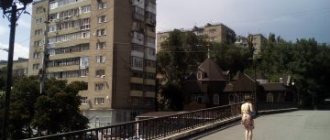Classification of building types
With the course of history, the types of buildings are constantly changing; in addition to the main ones, there are also transitional forms. The primary typological classification identifies the following main groups of buildings and structures:
- public buildings;
- residential buildings;
- industrial buildings, structures (including dams, bridges, highways);
- agricultural buildings.
This classification is built in accordance with the main types of activity: everyday life, work, social life. According to construction requirements and standards, four capital classes are distinguished: with increased requirements, mass construction, low-rise buildings, buildings that meet minimum requirements. They are determined by performance characteristics, urban planning significance, building materials, and structures. There are classifications according to purpose, number of floors (three degrees), durability, fire resistance (five degrees).
Residential buildings using construction technology - varieties
From a practical point of view, home buyers are most interested in the types of residential buildings based on construction technology - architectural expressiveness, performance characteristics, comfort, durability, and apartment layout depend on this.
According to this classification, residential buildings are divided into:
- brick;
- monolithic;
- prefabricated-monolithic (monolithic-brick, monolithic-panel, monolithic-frame);
- houses with a metal frame;
- block;
- panel.
Among these categories, prefabricated house construction prevails, in which most structures are manufactured in a factory, and the construction itself is reduced to the installation of structural elements.
Apartments
Residential premises located in a non-residential building. It sounds absurd, but it is true. As a rule, apartments are located in industrial or office buildings, as well as in hotels and hostels. Due to this feature, the apartments have a certain set of advantages and disadvantages.
| Advantages | Flaws |
|
|
According to the documents, this is a non-residential premises in which no one can live on a permanent basis. Due to this, the cost of utilities also increases.
Are brick houses the best?
Brick houses have durability, high strength, and the ability to withstand atmospheric, seismic, and biological hazards. Traditional technologies have been proven over the years. The designs of brick residential buildings allow the use of convenient apartment layouts and the construction of large premises.
The main disadvantage of brick construction is the high share of manual labor, which leads to the highest cost among all types of construction. Other disadvantages of brick as a building material are its heaviness and high thermal conductivity, which forces them to increase the thickness of the walls for good heat retention. Of the typical brick series, the most famous is the Moscow series “Towers” (Tishinskaya, Moskvoretskaya, Smirnovskaya). Buildings with 12 and 14 floors are distinguished by high ceilings, separate bathrooms, and are recognized as the highest quality for the 70s.
High-rise construction (over 16 floors) made of brick is considered unprofitable; construction standards for wall thickness (2.5 bricks) do not meet modern thermal criteria. Therefore, the construction of brick houses is used mainly in suburban low-rise housing construction.
How to choose an apartment layout and not regret it
The functionality and convenience of the apartment, its design and comfort, you want to see all this right away during the first inspection of the premises. But alas, most often, upon first inspection, what catches your eye is something that was part of someone’s life, not always happy and successful.
On the other hand, choosing an apartment is always a lot of questions that are of purely practical importance; here it is important that not only all systems work, and that the walls are in excellent condition, but that the layout is as convenient as possible.
Purchasing an apartment is an investment for years, which means you need to look ahead and plan that you need one or two rooms for your children.
And of course, each apartment is the place where most of your personal time is spent, where there is an opportunity to relax and gain strength, which means the layout and equipment should be as comfortable as possible.
Noticed a mistake? Select it and press Ctrl Enter to let us know.
Monolithic and prefabricated monolithic housing construction: pros and cons
There are very few monolithic residential buildings in their pure form. There are practically no standard series; all existing buildings were erected according to individual projects. The technology of monolithic reinforced concrete is well known - formwork is installed along the contours of future walls, floors, and load-bearing structures. They assemble a reinforcement frame, which is filled with factory-prepared concrete. The formwork elements are dismantled after the concrete has hardened.
At the same time, work with formwork takes up over 50% of working time and labor costs. Other disadvantages of monolithic construction are a significant proportion of manual labor, work performed directly on the construction site in the open air, dependence on the weather, and the need to care for concrete at low temperatures.
The main advantages of monolithic housing construction relate to the construction of public buildings. Creating free layouts, constructing large spans, continuous spatial systems, the possibility of any curvilinear forms are very good for unique architecture, and are not typical for mass residential construction.
The absence of seams, problems with sealing joints, improved thermal performance - all these are the undeniable advantages of a monolithic house.
Therefore, monolithic technologies are still used in foundation work, construction of underground parts of buildings, and are recognized as effective for combined structural systems and monolithic frames. Monolithic construction is a priority for seismic areas.
What are the apartment layouts? Their types and characteristics
The modern classification of the apartment housing stock today best meets the realities that have developed in the real estate market and in the construction industry.
The classification and division into categories, classes and types of housing used today makes it possible to accurately determine whether a room belongs to one category or another.
What are the types and types of apartments?
The distribution of apartments by type depending on their consumer properties is also reflected in official documents regulating market approaches to assessing the value of premises.
The classification adopted in the documents is based on three main classes of residential premises:
- Prestigious housing, which includes business class premises;
- Housing of mass type, meeting economy class standards;
- Social housing, which includes municipal housing.
Housing is also divided according to the period of construction the house belongs to. For new houses that have not been settled, the concept of a “primary” market has been introduced, where real estate is sold for the first time. And real estate belonging to the category of “secondary” housing, or in other words, where people have already lived or are living.
The secondary market today in most regions is characterized by the division of the housing stock into large and inconvenient classifications. In addition, local traditions and conditions make their own adjustments to the evaluation criteria.
For each city, in addition to generally accepted indicators, traditional regional preferences in the form of prestige of buildings also play an important role.
Thus, secondary market housing is characterized by:
- Pre-revolutionary houses - mansions, apartment buildings;
- Houses built in the period 30-40-50;
- Arrays of 50-60 years;
- Typical panel and brick houses built in the 70-80s;
- Improved planning projects implemented in the last years of the USSR.
This classification is more informative and accurate in the form of generally accepted terms:
- Stalinka;
- Khrushchevka;
- Brezhnevka;
- Regional committee projects;
- Czech, Polish, American or innovative house designs.
Each of these types has its own characteristics. Stalinka buildings are distinguished by their monumental construction, reliable ceilings and separate rooms with ceilings of 3.5 and sometimes 4.5 meters.
Description of secondary market apartments. What types of housing are there?
Khrushchev houses were mass-built housing during the movement towards communism; the projects themselves were supposed to alleviate the problem of housing shortage, because almost half of the country lived in workers’ barracks.
But for Brezhnev’s buildings, these are spacious rooms, large balconies and loggias, separate bathrooms.
And of course, standard reconstruction 9 and 16-story buildings with apartments from small to spacious 4-room apartments, “improved” layouts for high-ranking employees of the local elite.
And also Czech and Polish women, American women - studio apartments of 30 square meters, without a kitchen, but with a shower room, and innovative projects with thin partitions, a corridor system and glazed facades.
Shotcrete buildings
Intermediate between monolithic and monolithic-panel types of residential buildings have become buildings made of shotcrete concrete, in which the walls are made by wet shotcrete (under pressure). With this method of concreting, a reinforced polystyrene foam panel (the same basalt insulation) appears inside the wall. Insulated concrete is more durable and denser than conventional concrete. The technology is simple, used in many countries, and helps reduce heating costs. Planning flexibility increases, as in buildings with curtain panels for external walls. The flexibility of the technology allows the molding of curved panels, various sections, and wall configurations. The weight of the house is reduced.
Cottages
A cottage is a larger version of a house starting from 100m2. It often has two floors - with the top one being an attic. Designed for permanent residence. In Russia, a cottage is an “image” building, stereotypically purchased by the middle class and rich people. Just like a private house, it has its own plot of land and, often, a full-fledged garage.
Such real estate is located closer to the outskirts of the city, and most often - even outside the city. Hence the disadvantage - it takes a long time to get to work or school. But there is a plus - excellent ecology (provided that there is no production nearby).
Characteristics of monolithic brick buildings
In terms of cost and comfort, monolithic brick residential buildings are classified as business class. A production method in which the walls of a monolithic frame are filled with brickwork improves the quality of construction. When laying by hand, there are practically no joints between the frame and the filling of the wall planes. Brick finish on exterior surfaces improves aesthetics. With this method, internal brick walls become load-bearing elements of a single frame, and the level of thermal insulation increases by up to 40%. Monolithic-brick housing was practically never built in mass series; now it is being built according to individual projects.
Monolithic panel houses are distinguished by filling the monolithic frame with factory-made panels that match the size of the external wall of the room.
Khrushchev buildings
A new wave of construction under N.S. Khrushchev. “Khrushchevkas” were planned as apartments for any family, albeit small and not very comfortable, but at least their own. Construction of such five-story buildings was quick and cheap.
| Advantages | Flaws |
|
|
Khrushchev buildings were built between 1956 and 1985. Their service life was designed for 25 years. In fact, they cost much more, and some have already fallen into disrepair.
Monolithic frame and monolithic houses: what is the difference?
In practice, monolithic frame houses differ little from monolithic ones. According to monolithic frame technology, the supporting and load-bearing elements of the building are walls; columns are not used as the main load-bearing element. The main application is individual projects of luxury residential complexes.
Despite the obvious advantages of all types of prefabricated monolithic buildings (strength, thermal insulation, durability), disadvantages associated with design defects and poor-quality construction are revealed. Light partitions reduce sound insulation, the layout is not always convenient, and the ventilation systems are incomplete.
Studios
A studio is a one-room apartment with reduced footage and a non-standard layout. It differs in that it has no internal walls, with the exception of a separated bathroom with a toilet and shower. Ideal for young childless families or one person.
The advantage is the freedom of arrangement. This is essentially an open space that can be furnished and renovated as you please. In addition, studios are usually 20-30% cheaper than one-room apartments.

A significant disadvantage is that you can only have privacy in the toilet. No personal space if you live as a couple. Strictly not recommended for families with children or the prospect of having children - the area is too small for three.
Metal frame houses
Metal frames made from profile pipes are considered the latest achievement in construction technology. The world's tallest buildings and industrial structures are built using this method. In domestic mass construction, the technology is used little, mainly in low-rise housing construction.
The main advantages of metal frames are short installation times, low metal consumption (comparable to the consumption of reinforcement), and the ability to fill walls with any materials (including lightweight blocks, heat insulators, sandwich panels). Critical disadvantages for domestic mass construction are the high cost of profiled pipes and insufficient development of technology.
Block houses
A building block differs from a panel in its dimensions and installation features. Factory-made prefabricated structural elements are more often used in individual suburban and dacha construction. The main disadvantage of well-known block houses is the poor execution of installation joints. It results in uneven wall surfaces, poor quality plaster, and uneven ceilings.
In modern designs, block-panel houses are more often built, alternating volumetric blocks in the wall construction and panels between them. The use of lightweight concrete (expanded clay concrete blocks, wood concrete) in mass construction has not yet found application.
Panel housing construction
Typical examples of a panel house include a building structure entirely composed of large-sized, flat, factory-made elements (panels). Panel elements are installed directly on the construction site. Panel housing construction is the most popular technology for prefabricated housing. Standard designs, manufacturability of factory production, high speed of installation - significantly reduce the cost of construction. The main disadvantage of panel structures is the standardization of layouts, the difficulty of remodeling an apartment tied to load-bearing walls due to their rigidity. There are large-panel residential buildings, in which the size of the panels is tied to the size of the room.
The load-bearing capacity of the walls is ensured by wall panels (one floor high). Such a panel is not self-stable - stability and operational strength are ensured by the design of joints, connections, and welding joints. Floors are also made from prefabricated reinforced concrete panels, decking, and floor slabs.
External wall panels perform heat-shielding functions, while internal panels combine load-bearing and sound-proofing roles. Panel houses make up the vast majority of the existing housing stock.
According to consumer reviews, the best panel series are:
- 121 “Gatchinskaya” (rational layout, good lighting, heat conservation);
- I-700 (22-storey tower-type buildings, all rooms are insulated, three-layer external walls);
- RD-90 (three-layer external walls, rounded corner rooms, favorable appearance);
- GMS-3 (individual apartment layouts, brick, porcelain stoneware facades, additional layers of insulation);
- P-44 (mass series, good insulation, layout);
- 1.090.1 (interfloor sound insulation, large bathrooms, two bathrooms in three-room apartments);
- 600.11 (large entrance hall, many storage rooms, triple glazing);
- 606 (large kitchen, convenient layout, interfloor, inter-apartment sound insulation, parquet floors);
- new 137 (large kitchen, transverse bathroom, parquet, large utility rooms).
New technologies are being applied to the development of well-known structures, for example, seamless finishing of facades. Wall panels of licensed technologies are lined with heat-insulating material and several layers of base, decorative plaster. This eliminates through seams. For many homes, three-layer, two-step panels are supplied.











